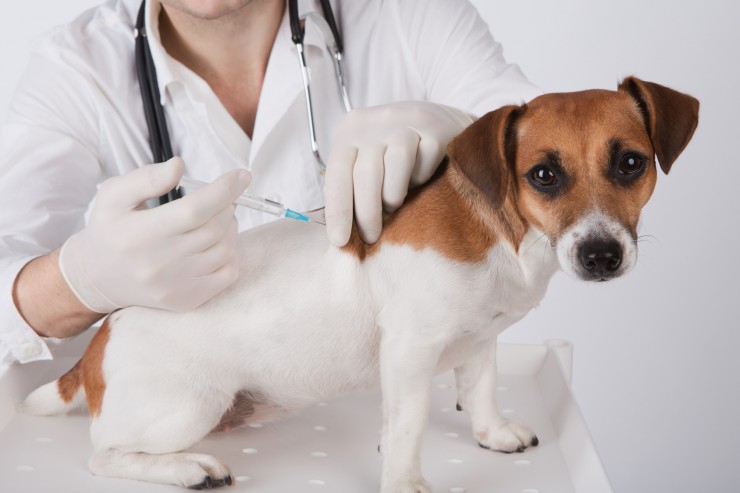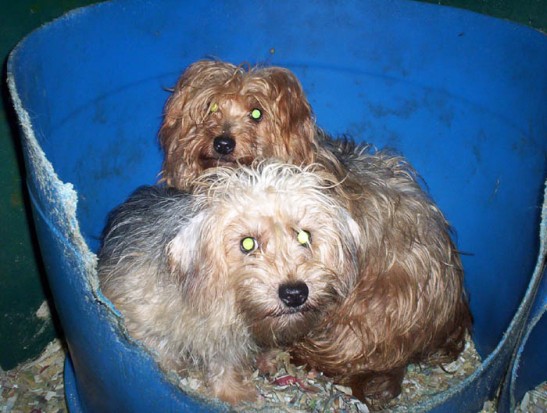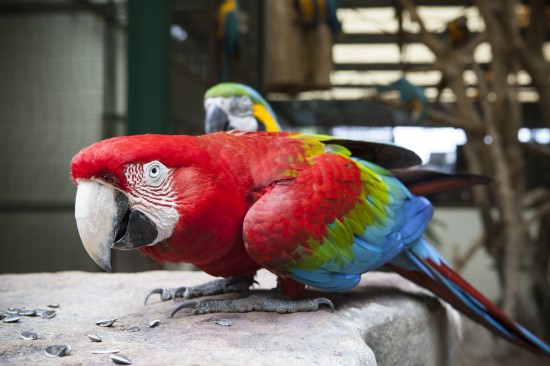
The largest ingredient in a dog’s diet, about 70 percent, is obviously the meat. I’m sure you have have read a lot about the dangers of bacteria in raw meat.
Those threats are to humans, not to dogs for the reason that dog’s bodies are acidic in their pH balance while ours are alkaline. Dogs digestive systems are also a lot shorter than ours, meaning everything passes through a lot quicker.
Dogs are canines, same family as wolves. So if canines were in danger from the parasites in raw meat, the wild would never have produced an adult dog.
We always buy their meat from our local grocery store. We mostly get human grade hamburger for them.
The next largest part of a dog’s raw food diet is vegetables and fruits, about 15 percent or so. The veggies need to be put in the blender and processed quite good. Because of the dog’s intestines being short, the high amount of fiber and bulk in some vegetables can make it harder for them to digest, meaning that they won’t be able to utilize the necessary nutrients from these foods. Remember that the bulk of these foods in the wild were obtained from partially digested intestines of animal prey. So it’s naturally chewed up.
We normally put in a mixture of carrots and broccoli.
Organ meat is next on the list. We give about 10 percent of organ meat to them. Beef heart or Beef Liver normally. We also buy this from our local supermarket. But I’ve seen it sold in natural pet food stores.
Organ meats are an important part of a the raw diet. Offal should be fresh, raw and can include liver, kidney, heart, brain, and tripe [stomach]. In its raw state it is a nutritionally valuable food with much needed protein, essential fatty acids, minerals and vitamins.
Next would be your fats or oils, which supply essential fatty acids. Research in essential fatty acid deficiency has shown that such a deficiency can lead to stunted growth, reproductive problems, and degeneration of lungs, liver, and kidneys. Too little essential fatty acid intake is also implicated in rheumatoid arthritis.
You can buy various oils like soybean oil, sunflower oil, safflower oil, or oil of evening primrose. Your best bet is to go to a local health food store or pet health food store and get it from there, although you can obviously get most of those in your supermarket.
Give around one teaspoon or tablespoon depending on the size of your dog. Giving a small amount too much is not going to be a bad thing.
Next in the mixture is vitamins and mineral supplements.
Your pet will have a long-lived life without constant supplementation because on a raw diet their vitamins from food are already 100 percent bio-available to them so they are getting a good amount each day. But sometimes it may be necessary to give them added amounts.
Now you may argue here that according to my own argument, that dogs are canines, wolves don’t pop a daily vitamin pill in the wild. And while that is completely true, they also do not eat food grown in a nutrient worn-out soil, which your pet will be doing, unless you buy your food organically or from a popular health food store. Plus they didn’t have the extra task of fighting off stress from all the new poisons in their environment like household cleaners for example.
Vitamins can be tricky. When you give them more of one vitamin it can deplete another; For instance, if you give your pet just B6 you can increase the need for other vitamins. This could cause nervous system damage along with other problems.
Your best option when it comes to vitamins is to consult your local holistic vet about the best combination to give your pet depending on their diet, any deficiencies they may have, any diseases they may have, and anything else they need to take into account.
Raw bones are next on the list. I’ve heard a lot of horror stories about bones killing pets. But I’ve also heard a lot of stories about people feeding the wrong size of bones to their pets or cooked bones to their pets.
This is my advice and this is what we feed. We always buy large raw beef or buffalo bones. My little one spends a lot of time chewing and cleaning his teeth in the process but also he likes the marrow which offers him a lot of nutrients.
If you are really worried you can buy pre-made mixtures of dog raw food. Most already mixed raw dog foods, which you can get from a pet health food store or pet raw food company directly, will have finely ground up bone in their product. But please make sure that they do grind it up or just look through the food before giving it to to your pet because people have found larger chunks of bones in the already made product.
And lastly I want to quickly mention water. We use for ourselves and our dogs bottled water. For many reasons that would fill up another article we feel this is best for our whole family including our dogs.
The amount of raw food that you give your dog will depend on many factors. Their size, their age, their activity level, conditions they may have, and whether or not they are gaining or losing weight.
A general guideline that is used is 3-5 percent of their weight is fed daily. So a 100 pound normally active dog would require approximately 3 pounds of food per day. Or 1.5 pounds per meal if you are feeding two meals a day.
So if you are thinking about feeding your pet raw make sure you read up on the diet before attempting it.
Yes it takes more time than putting some kibble in a bowl but it also gives you more time with your pet in the long run.
Do you have a lot of questions about the raw food diet? Learn more at Going Rawr, a complete guide to putting your dog on a raw food diet.
 The Top Five Most Commonly Overlooked Health Problems In Cats
The Top Five Most Commonly Overlooked Health Problems In Cats
 How Long Does The Parvovirus Remain In The Environment?
How Long Does The Parvovirus Remain In The Environment?
 Puppy Farms - How And Why To Avoid Buying A Farmed Puppy
Puppy Farms - How And Why To Avoid Buying A Farmed Puppy
 Dog Food - How To Compare And Get Best Value For Money
Dog Food - How To Compare And Get Best Value For Money
 Red And Green Macaw (green Winged Macaw)
Red And Green Macaw (green Winged Macaw)
 Genetic Disorders Commonly Seen In The Lhasa Apso
Genetic Disorders Commonly Seen In The Lhasa Apso
Copyright © 2005-2016 Pet Information All Rights Reserved
Contact us: www162date@outlook.com